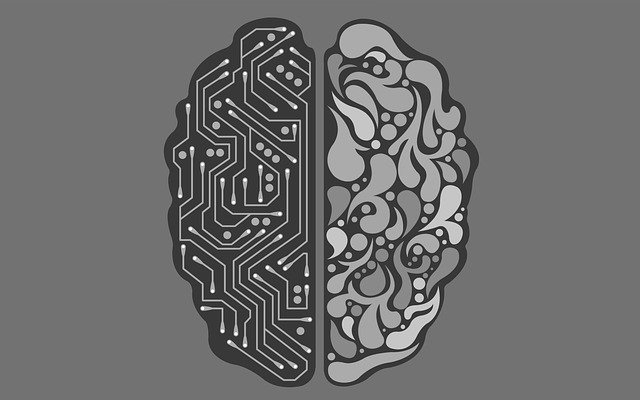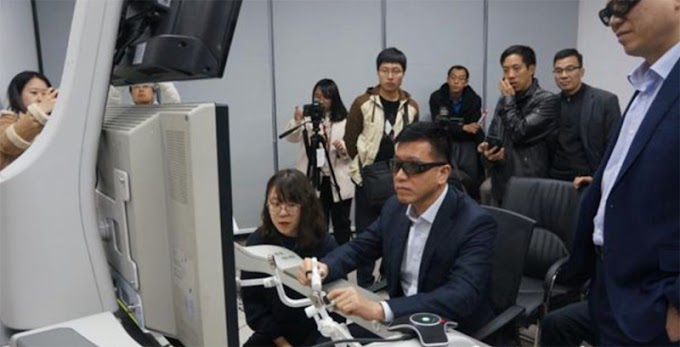Recently Elon Musk demonstrated a device called ‘Link’
which can read brain signals with the help of hair-like electrodes. The device
needs to be implanted inside the skull! This makes it a little bit scary, but
Elon has created an operating procedure in which a person can get a ‘link’
implanted within a day. But what is the necessity of such kind of device, what
advantages that one can achieve through this? This article contains some
detailed information that might answer these questions.
 |
| Elon Musk with 'link' device transplanting machine. Credit: Neuralink/YouTube, website |
What is ‘link’?
It is a device which is called a ‘Brain-computer
interface’ in a broader sense. It is an interface between our brain and a
computer, just like an input device (mouse & keyboard) to interact with the
brain. These interface devices let a computer get some data from the brain and
send commands to the brain if possible. So, they’re kind of a bridge between
the brain and a computer. But Accessing brain signals is not easy, for that we
have to be extremely careful about the working functionality.
 |
| Brain-computer interface implant, credits: Neuralink/youtube |
Our brain is made of hundreds of Billions of special
kinds of cells called ‘neurons’, each task within the body is controlled by a
gigantic network of neurons. So, our brain is capable of processing information
that is collected by the nerves throughout the body. This network of neurons
entirely works on the passing of electrical signals through them.
By carefully probing these electrical signals one can
understand what is going inside our head. All though, our brain processes
petabyte of data which is superior to any supercomputer that we have currently.
Neuralink uses hair-like needle electrodes which are
carefully inserted into the brain tissue. The electrodes sense electric field
radiated by the millions of neurons and a voltage is generated across the
electrodes according to faraday’s law of EM induction. It worth mentioning that
the induced voltage is very weak and very hard to detect. These voltage signals
are then identified, processed by a battery-operated computer attached to the
system. This whole arrangement is called a ‘Link’.
 |
| Needle-like electrode inserted into the brain, credits: https://www.biorxiv.org/content/10.1101/703801v4.full.pdf |
The data accumulated by the ‘Links’ can be wirelessly
transferred into any computing platform which is outside of the body. In case
the battery dies, one wireless charring module charges the battery inside it.
Application of the ‘link’
According to Elon Musk, the primary objective of his
company ‘Neuralink’ is to create Brain-computer interface chips (‘link’) which
can detect some of the diseases related to neuron damage. Which includes,
paralysis, blindness, deafness, memory loss, stroke detection, etc.
That sounds great all the systems in our body are kept
functional by the brain only. Due to some of the damages in neurons, sometimes
some of the complications arise. With ‘artificial Intelligence’ the symptoms
can be identified way before it appears in front of us. Just like, there exist
some algorithms that can detect cancer cells much better than a formal
diagnosis.
 |
| The 'link' by Neuralink, credits: NEURALINK 2020 |
These chips open up a field of applications where
researches and engineers can work better in the diagnostics of some chronic
diseases. If the detection works well, the next step would be to develop an
appropriate model to treat the diseases. As chemical medication always leads to
severe side effects.
To show the effectiveness of the ‘link’ Musk
demonstrated a pig with a ‘link’ implanted in its head. The implant collects
the data from the pig’s head and sophisticated AI algorithms predict the muscle
movements. To proof the effectiveness of the method, one camera is also used to
detect the muscle movements in real-time.
It was observed that the predicted movement from
‘link’ devices is very close to the real-time data. This opens up a wide area
of research and development.
 |
| Movement prediction by using 'Link' & actual movement tracking, credits: Neuralink/youtube |
Other players in the ground
Elon Must is not the only person who is investing in
this application, there other organizations who are working in synthetic
organs, prosthetics by using ‘Brain-computer interfaces’ like ‘link’.
Another neuroscience start-up ‘Kernel’(link) ‘wants to
improve human cognition’. Right now, they are on treating people with
Alzheimer's and helping paraplegics regain movement.
‘Paradromics’(link) is trying to build the first
high-data-rate brain-computer interface, where data is exchanged seamlessly
between brains and computers. They are targeting illnesses such as blindness,
paralysis, and mental illness, which today are considered untreatable, can be
treated by using sophisticated thousands of sensor channels.
In India CDAC-Noida (link) is engaged with activity in
respect for Non-Invasive Brain-Computer Interfaces (Design and Development of
Applications for Physically Challenged Persons) by incorporating EEG signals.
This might enable people suffering from physical disabilities such as stroke or
limb paralysis to operate prosthetics devices by using their brains.
Conclusion:
Operations on brain-computer Interface is a new and
evolving area of work. Which falls under the research and development
boundaries. A few organizations have
demonstrated their finding nowadays, but it has to go a long way before it can
be directly implemented in the human body. First of all, all the research has
to be standardized, and secondly, their operation has to be approved by the
concerned Medical authority in the geographical region. Young scientists and researchers
are encouraged to take part in the R&D activities related to the
‘brain-computer interface’.




0 Comments
All non-spamy comments will be visible